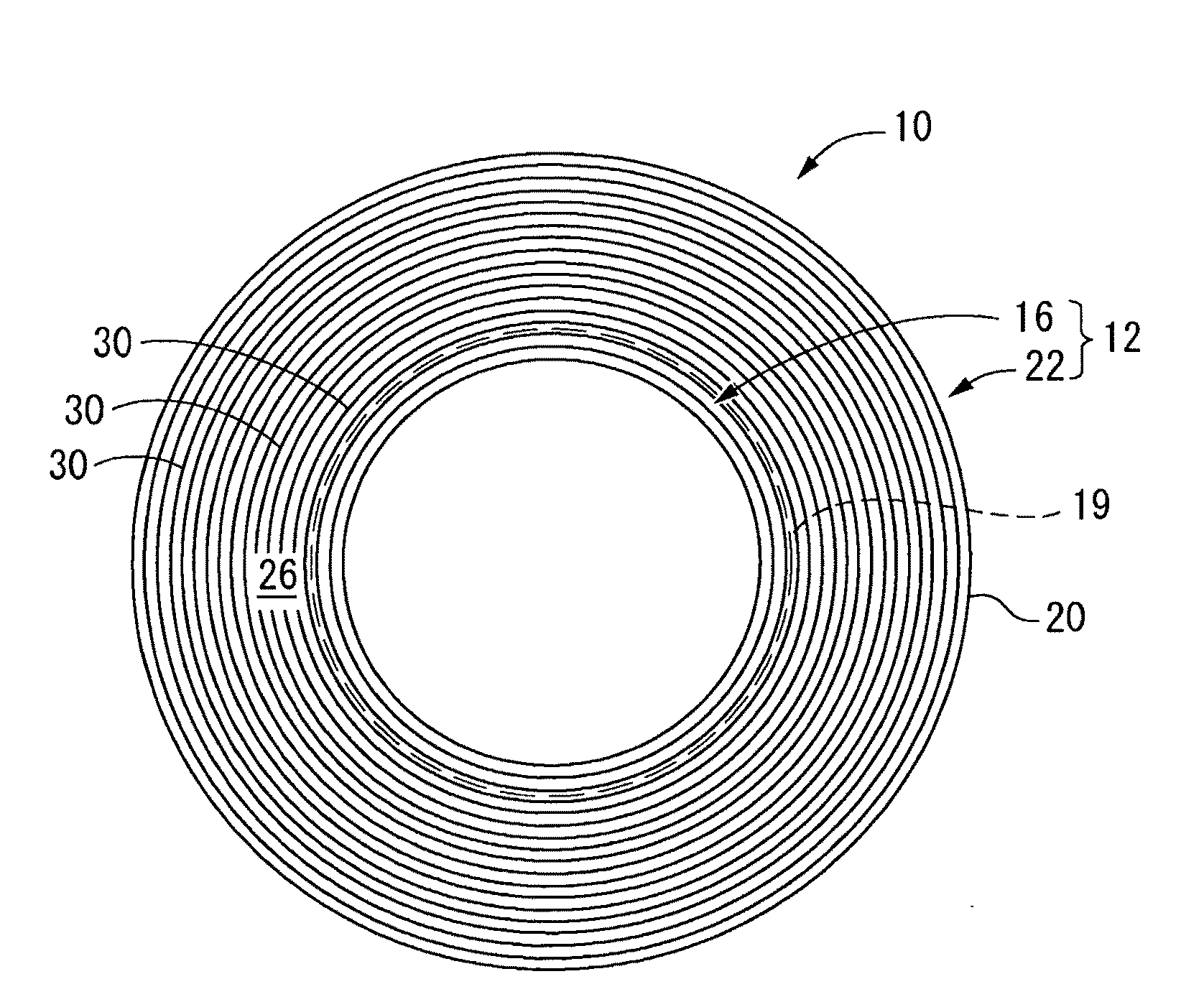Contact Lens and Method of Producing Contact Lens
a technology of contact lens and contact lens, which is applied in the field of contact lens, can solve the problems of reducing productivity, difficulty in maintaining satisfactory water retentivity for an extended period, and reducing water retentivity, so as to achieve high-quality oscillation control, reduce production costs, and produce efficient minute periodic structures
- Summary
- Abstract
- Description
- Claims
- Application Information
AI Technical Summary
Benefits of technology
Problems solved by technology
Method used
Image
Examples
examples
[0115]A series of tests carried out for the purpose of demonstrating the technological advantages afforded by the contact lens and the contact lens production method in accordance with the present invention are presented below by way of examples.
[0116]First, a die plate of material comparable to that of the female mold molding die 32 (second die 46) that is employed in production of the contact lens 10 according the preceding embodiment was prepared. The material of the die plate was STAVAX™.
[0117]Next, laser light was directed onto the surface of the die plate to produce a minute periodic structure. As the laser light, there was employed a femtosecond laser with wavelength of 800 nm, pulse width of 120 fs, and repetition frequency of 1 kHz. A femtosecond laser machining unit made by Canon Machinery Co. Ltd. was used as the femtosecond laser machining unit.
[0118]A resin plate of material comparable to that of the lens molding female mold 36 in the preceding embodiment and correspond...
PUM
| Property | Measurement | Unit |
|---|---|---|
| depth | aaaaa | aaaaa |
| depth | aaaaa | aaaaa |
| aspect ratio | aaaaa | aaaaa |
Abstract
Description
Claims
Application Information
 Login to View More
Login to View More - R&D
- Intellectual Property
- Life Sciences
- Materials
- Tech Scout
- Unparalleled Data Quality
- Higher Quality Content
- 60% Fewer Hallucinations
Browse by: Latest US Patents, China's latest patents, Technical Efficacy Thesaurus, Application Domain, Technology Topic, Popular Technical Reports.
© 2025 PatSnap. All rights reserved.Legal|Privacy policy|Modern Slavery Act Transparency Statement|Sitemap|About US| Contact US: help@patsnap.com



